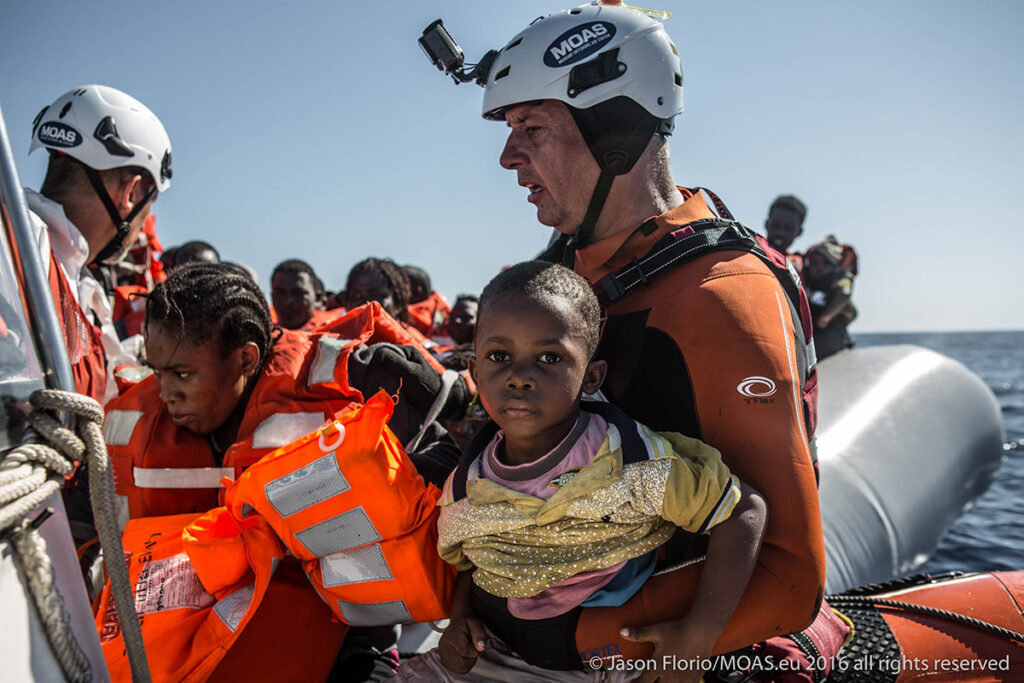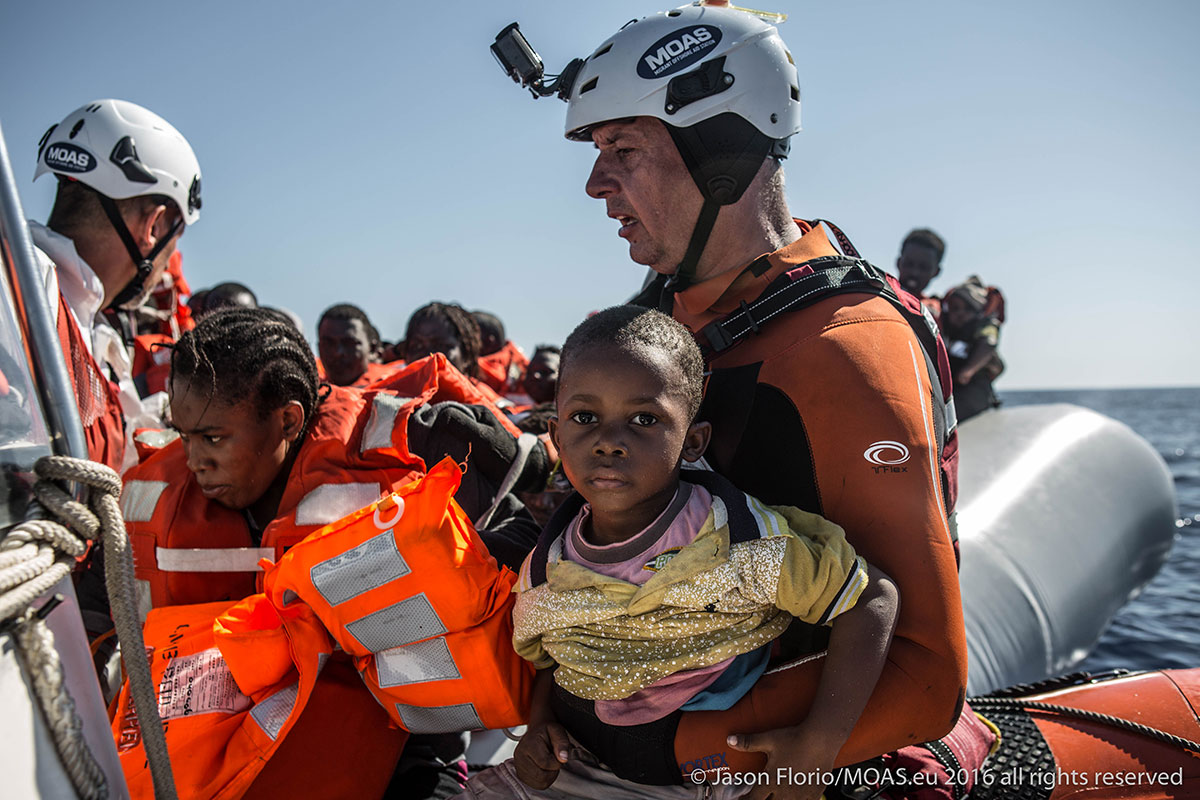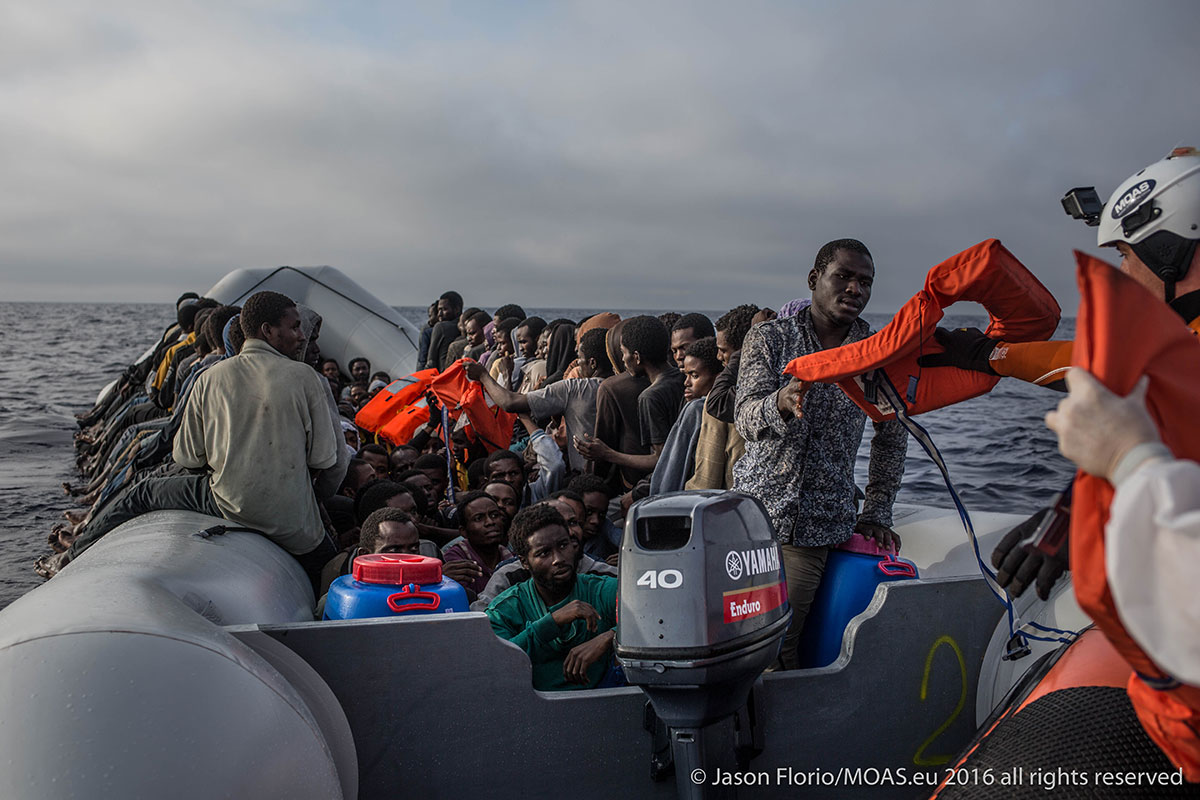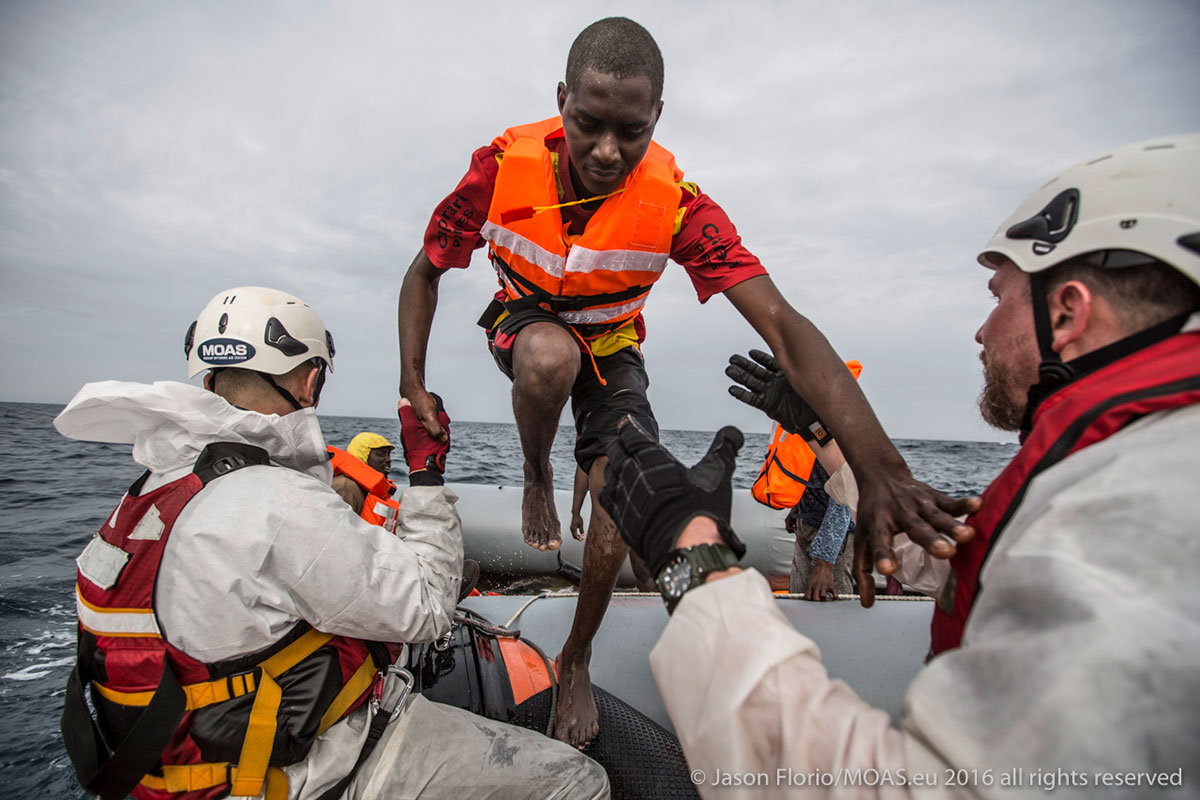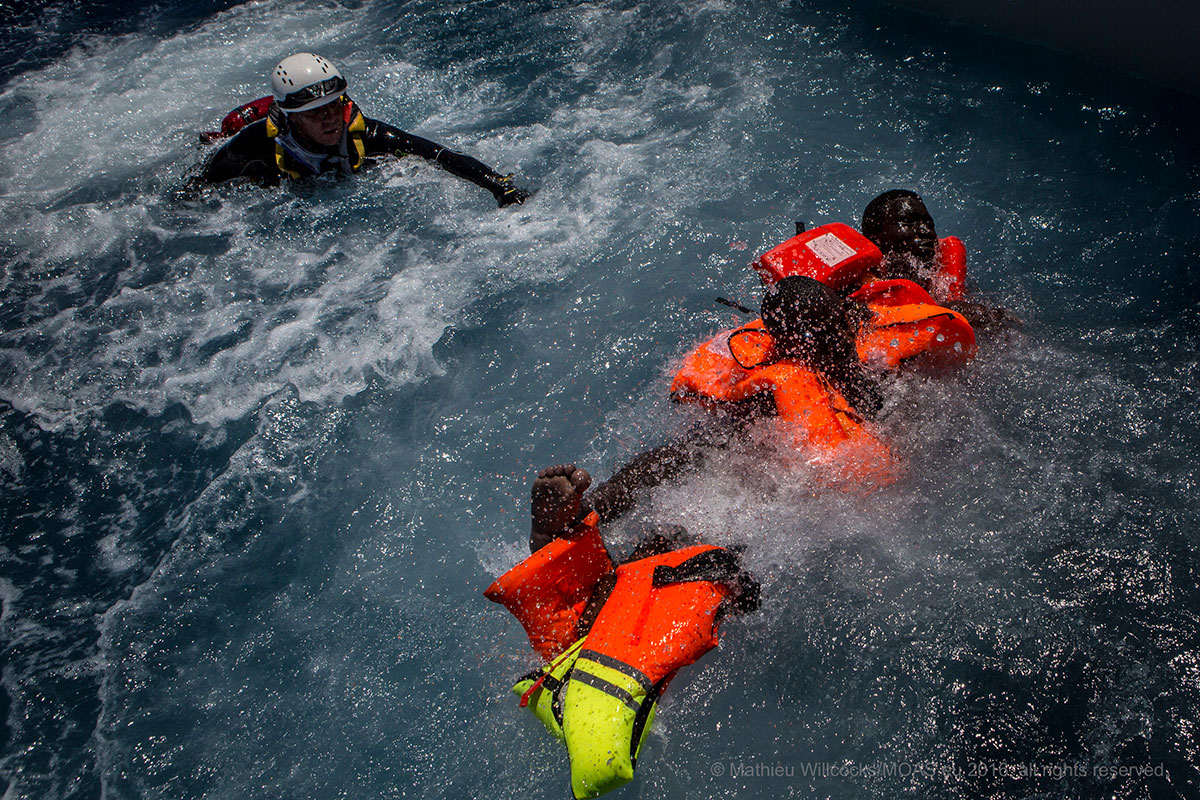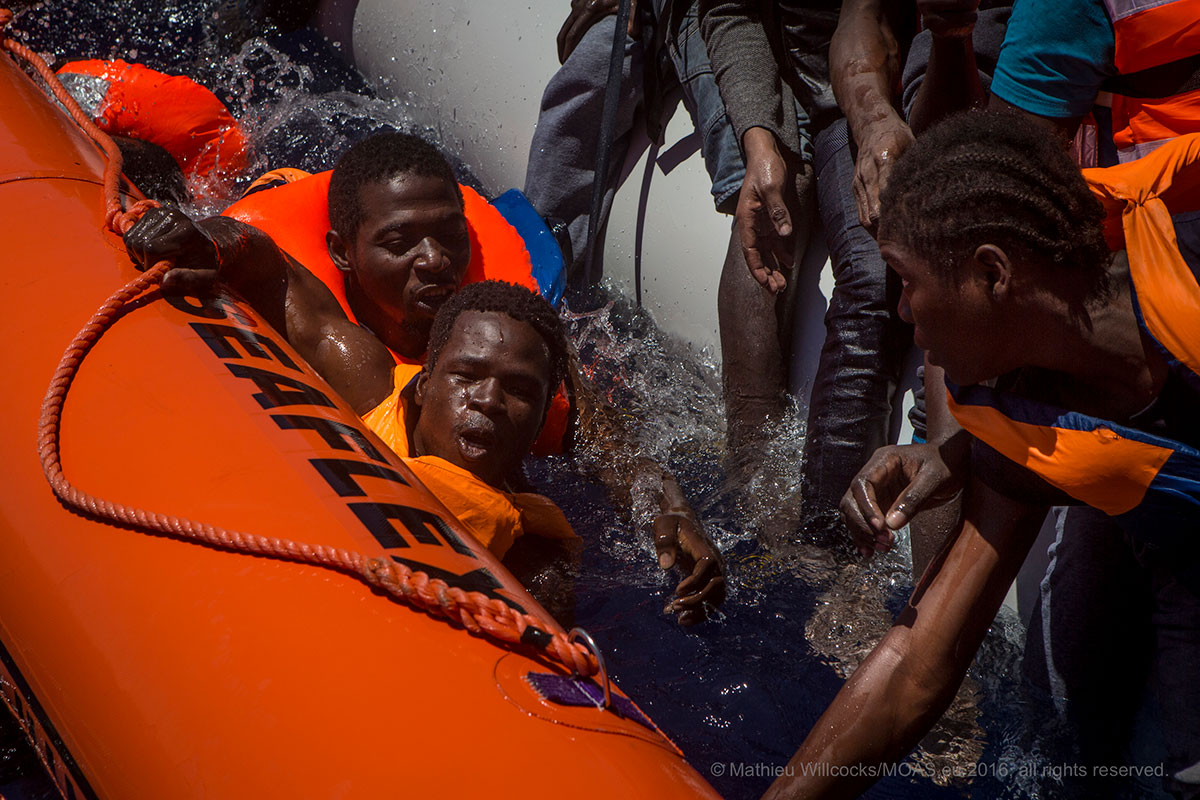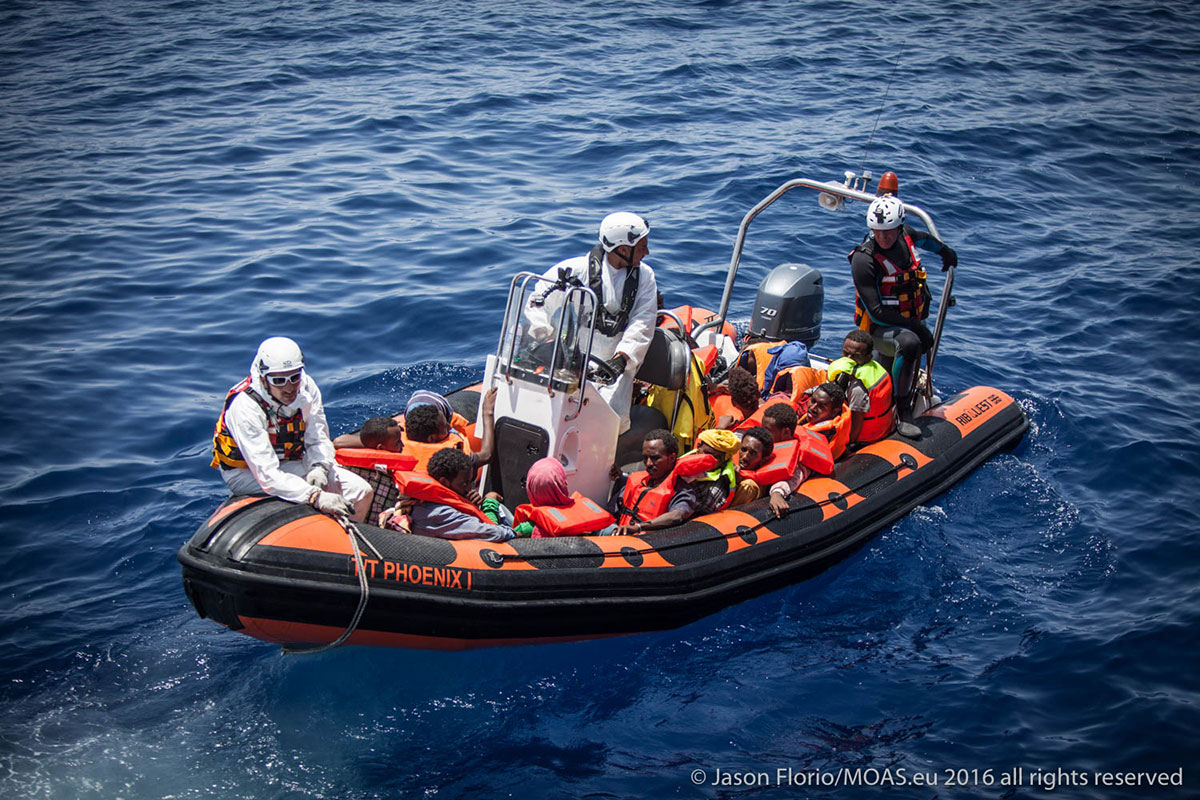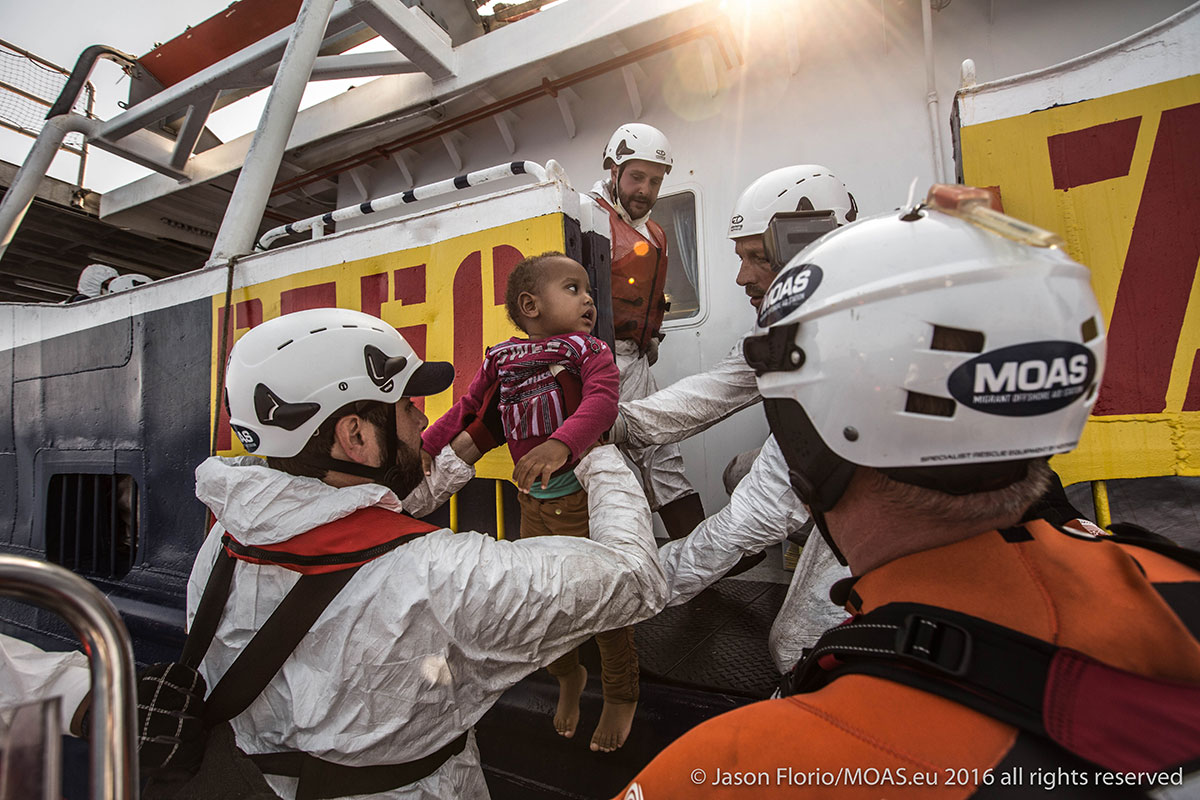Our professional and specialist crew is an important part of what makes MOAS the field-leading organization it has become. Throughout the month of May, we will be sharing with you how they undertake rescue operations and the challenges that they face during our missions. Today, we will explore the most intense part of our operations – the rescue itself.
Once a vessel in distress has been identified and we have been tasked by the Maritime Rescue Coordination Centre (MRCC) in Rome to proceed with the rescue, our crew must plot the course of the vessel. If the rescue takes place at night, we will use our night-vision equipment to help us locate and track the vessel as it drifts. The Phoenix will then begin heading towards the estimated position of the vessel. As soon as it is in sight, our crew launches one of the RHIBs to perform an assessment of the vessel itself and the people on board.
“It sounds strange, but the only time I have any nerves is in the moments before we first reach the vessel. Not knowing what we are about to encounter is the only difficult thing. Once we know what we are dealing with, our training kicks in and we get on with the job we are there to do”
(Paul, Rescue Swimmer)
The number of people on board depends on the type of vessel; on a rubber dinghy there may be up to 150 people, or up to 400 if it is a wooden boat. As the RHIB approaches, our crew explains to the people on board that they are there to help them. In the best case scenario, the vessel is stable, and the crew are able to begin handing out lifejackets and initiate the process of transferring everyone to safety.
In other cases, the crew arrives on scene and find vessels already deflating or sinking, with people in the water. In these situations, we have to act as quickly as possible by deploying the centifloat – a large inflatable tube that people are able to hold on to – or taking the decision for our rescue swimmers to enter the water to intervene.
“I’ve realised that some of the people haven’t seen the sea in their life […] To them it’s something new: they always tell us of the dangers crossing the desert, and they think that the sea will be the easiest part of their journey, but then they realise it is not.”
(John Hamilton, SAR Team Leader)
Anyone with a medical emergency, as well as women and children, will be transferred first to the Phoenix. Each RHIB can take about twenty people on board, meaning that a RHIB can do up to seven to twenty trips in one rescue. While we are preparing to make the transfer, the captain will reposition the Phoenix to act as a breakwater and to shorten the distance to the vessel in distress.
As well as transferring those who have survived the journey, we also must take on board the people for whom the journey has been fatal. Conditions on wooden boats are particularly dangerous, as people are often packed below decks next to the engine, where the lack of ventilation means people can suffer from heat exhaustion and asphyxiation from fuel fumes. “The persons down in the hold, sometimes they think that their friends or relatives are just sleeping […] when in fact they’re dead.” (John Hamilton, SAR Team Leader). Our medical team on board will try to assess the cause of death, in case it is something that could impact the other people who have been rescued, and so they can pass on the information to the Italian authorities.
Once the rescue operation is over, the crew’s attention turns to taking the best care possible of those who are safely on board the Phoenix. In the next blog in this series, we will explore how our crews deliver post-rescue care, and what life is like on board for the people we rescue.
Please sign up to our newsletter at the bottom of this page for all the MOAS news and updates and by giving whatever you can to help us save lives at sea.

